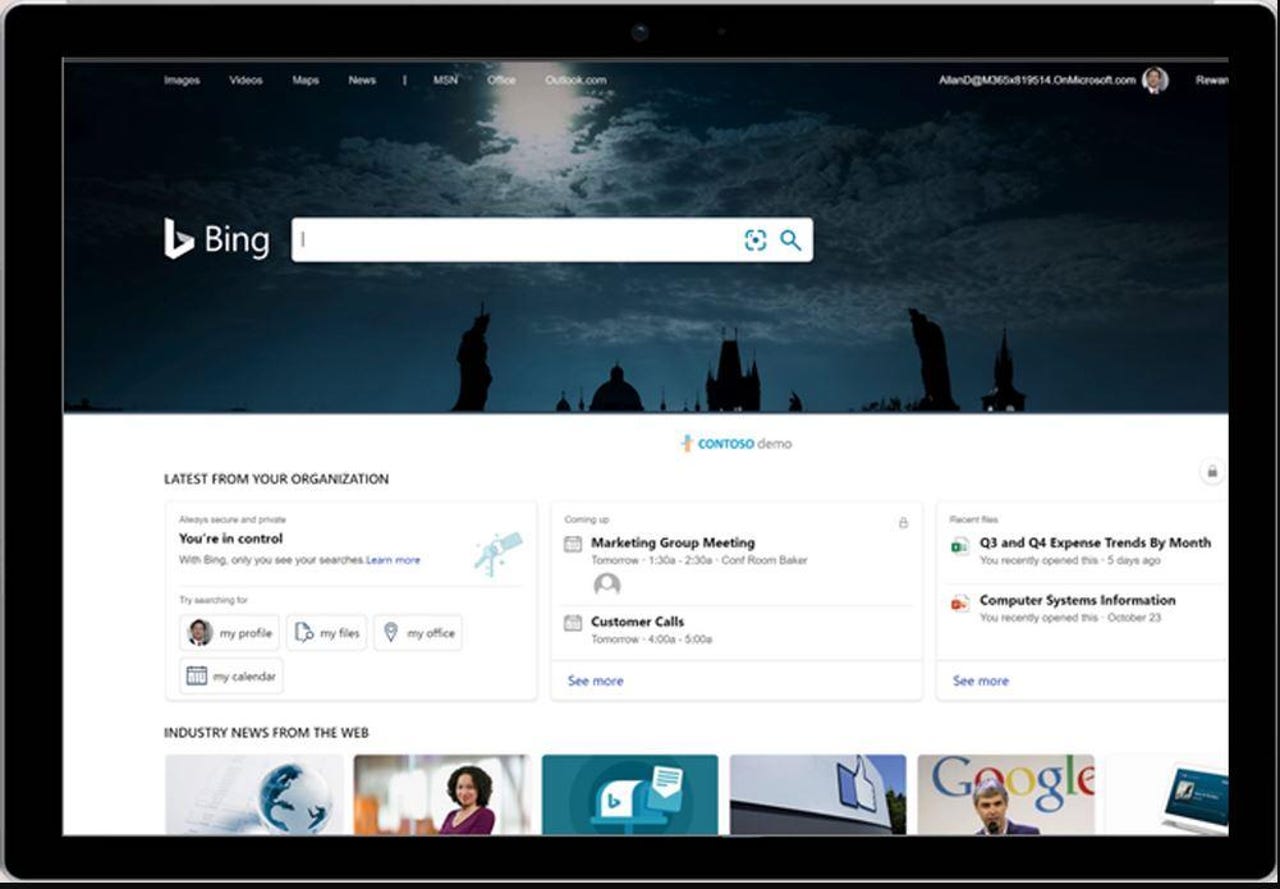Here's how Microsoft is looking to make search smarter and more natural


microsoft ignite 2019
Microsoft is continuing to evolve its unified Microsoft Search service. The latest pieces it is integrating into Microsoft Search involve its 'Project Turing' deep-learning work, as well as advances it is making around semantic meaning and intent.
Microsoft Search, for those needing a quick refresher, is the name Microsoft uses to refer to its unified search experience designed to work in Windows, Office, Bing and more.
A couple of years ago at Ignite, Microsoft officials introduced "Bing for Business," which was part of its plan to enable Bing to work as an intranet search service, not just an Internet search service. At Ignite 2018, Microsoft rechristened this capability as "Microsoft Search in Bing." This intranet-centric Microsoft Search technology will be integrated into the new Chromium-based Edge, Windows 10, Office.com and various Office apps and more.
As officials outlined a couple of years ago, Microsoft's ultimate goal with Microsoft Search is to provide answers not just to simple queries, but also more personalized, complex ones, such as "Can I bring my pet to work?". The Microsoft Graph API, semantic knowledge understanding from Bing, machine-reading comprehension and the Office 365 storage and services substrate all are playing a role in bringing this kind of search to Microsoft's apps.
At Ignite 2019, Microsoft officials talked up the new intelligent, natural-language search piece of Microsoft Search. The Semantic Search capabilities are currently in private preview (for which users can request corporate access here) for use in SharePoint, Office.com and Bing. A public preview of semantic search is coming in the first calendar quarter of 2020. General availability is slated for later in 2020, and third-party connectors extending availability of semantic search will arrive in 2021, officials said at Ignite.
Using semantic search inside Microsoft Search, users will be able to get people results based on skill and topic matches based on contents in mail, documents, teams and other internal sources. Users also will be able to search based on people's attributes, such as job titles and physical locations. With more natural-language understanding built in, Microsoft Search will be able to better discern search intent and contextual meaning of terms (and even acronyms), officials said.
What's helping power this Semantic Search work is Microsoft Research's "Project Turing," which officials described as "AI-powered search for the enterprise," fits in here. (I wrote a bit about Project Turing before Ignite. But now that I've seen/read about its semantic search work, more of this makes sense.)
At Ignite, Microsoft execs defined Project Turing as the codename for a large-scale, deep-learning effort inside Microsoft. Turing is meant to help get around the limitations in existing term-based matching algorithms developed in the 1970s and 1980s which are still used by current search engines. These algorithms lack an understanding of a user's intent, especially when used with a natural-language query. Those kinds of searches often require users to click through numerous documents to find the exact information they're seeking.
Project Turing will impact Microsoft Search and the other products where it's embedded, including Windows, Office, Cortana and Bing, said Principal Program Manager Youngji Kim.
"Our goal is natural-language understanding using state-of-the-art, generalizable end-to-end deep learning models," she told Ignite attendees.
Turing in Bing already has helped Microsoft to understand semantics via searching by concept instead of keyword. Natural-language processing also has helped with understanding query intent, she noted. Semantic understanding means users don't have to expect exact word matches. (When searching for Coke, matches with "canned soda," also could be part of the set of results generated, for example.) The Turing researchers are employing machine reading, as well, to help with contextual search/results.
It sounds to me like the coming Semantic Search capabilities in Microsoft Search also will fit into Microsoft's "Project Cortex" knowledge-management plan, which isn't too surprising given both sets of technologies rely on the same Graph/substrate underpinnings. It's going to be interesting to see how and if all the pieces line up as Microsoft moves this vision of smarter, more personalized search forward.